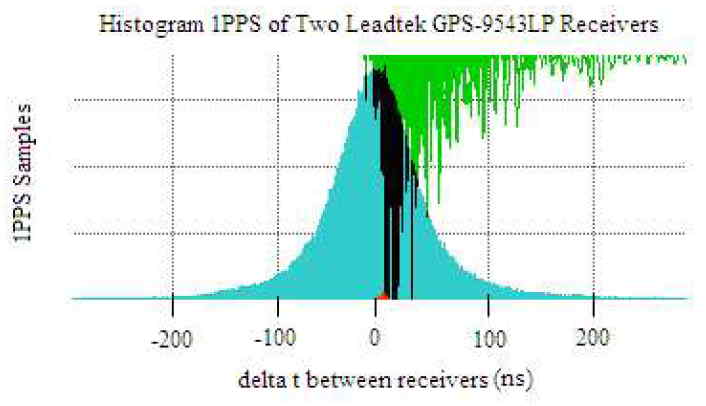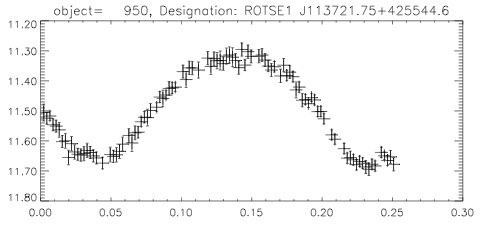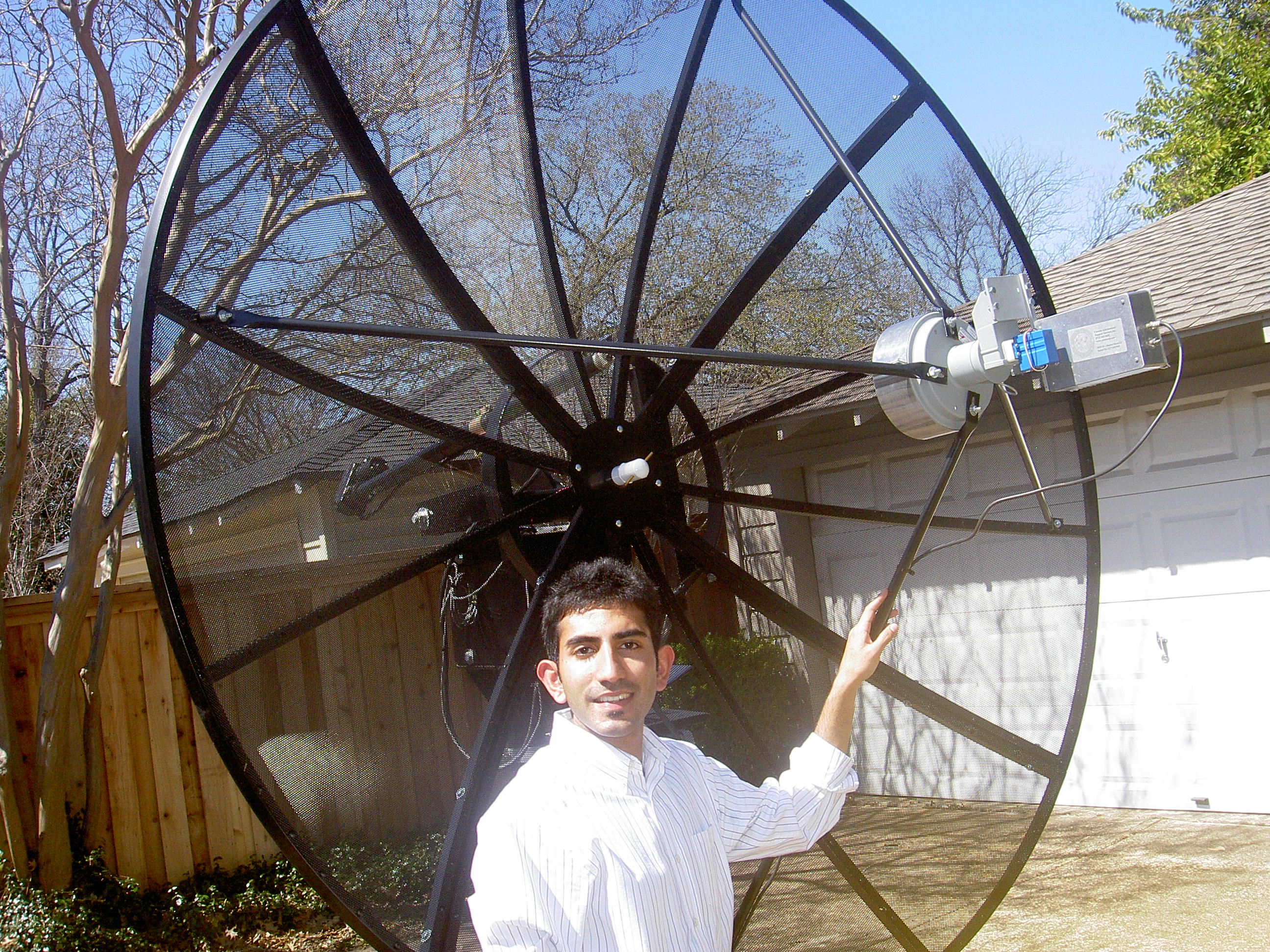Undergraduate Research
We strongly encourage undergraduate students to engage in research projects to supplement their curriculum. There are many benefits to the student. Real-world experience confronting and solving genuinely new problems provides an excellent preparation for life after SMU. Introduction to some of the techniques and state-of-the-art technologies used in a research environment prepares a student for a variety of career paths. Projects leading to publication bring a valuable distinction to a student's resume in today's competitive world. Pursuing an undergraduate research project reinforces material gleaned from coursework and may provide valuable feedback on the kind of career a student favors. And lastly, SMU's undergraduate research program provides several very interesting projects in particle physics, applied physics, astrophysics and physics pedagogy.
Theoretical Physics
Fundamental Particles
Applied Physics
Astrophysics
Physics Pedagogy
How Undergraduate Research Works
Theoretical Physics:
The study of modern physics are not possible without sophosticated calculation techniques. These techniques often have a very general structure, but then are quite useful in specific fields of research, such as particle physics. One of our projects involving such techniques explores the efficiency of various methods for integration of mathematical functions depending on a large number of real variables. Fast and accurate algorithms for multi-dimensional integration are essential for many applications in high-energy physics and other scientific areas. In this effort, notions essential for the completion of this project are introduced on the example of the well-known Battleship game. The concept of Monte-Carlo sampling and integration is explained. Then the relevance of these notions is explored in the context of realistic multi-dimensional integration calculations. More details can be obtained at here or contact Prof. Pavel Nadolsky.
Fundamental Particles:
 Particle physicists measure intrinsic properties of fundamental particles, and undergraduates
have an opportunity to participate in this via two projects.
We are constantly exposed to a steady drizzle of ephemeral particles ("muons") produced in
Earth's upper atmosphere that travel downward to sea level at close to light speed. These
muons are akin to heavy, radioactive electrons and live for about 2 millionths of a second.
Besides their brief lifetime, properties indicative of their quantum mechanical nature can be
measured in the undergraduate laboratory. Muons, like electrons, behave in some sense like
minute, spinning magnets and a quantity (the "gyromagnetic ratio") encapsulating this behavior
can be measured using a sandwich of scintillating plastic slabs and a copper plate absorber all
placed inside a specially constructed magnet. Undergraduate Amy Hand is shown developing custom
software to design a special magnet to measure this quantity. The magnet's
design is complete and student Alex Weckiewicz is building the magnet.
Currently, the students have been designing and constructing
all the particle detectors to be placed inside the magnet. With some luck, we hope to measure
the muon's gyromagnetic ratio this school year. More information is
here
or contact Prof. Tom Coan.
Particle physicists measure intrinsic properties of fundamental particles, and undergraduates
have an opportunity to participate in this via two projects.
We are constantly exposed to a steady drizzle of ephemeral particles ("muons") produced in
Earth's upper atmosphere that travel downward to sea level at close to light speed. These
muons are akin to heavy, radioactive electrons and live for about 2 millionths of a second.
Besides their brief lifetime, properties indicative of their quantum mechanical nature can be
measured in the undergraduate laboratory. Muons, like electrons, behave in some sense like
minute, spinning magnets and a quantity (the "gyromagnetic ratio") encapsulating this behavior
can be measured using a sandwich of scintillating plastic slabs and a copper plate absorber all
placed inside a specially constructed magnet. Undergraduate Amy Hand is shown developing custom
software to design a special magnet to measure this quantity. The magnet's
design is complete and student Alex Weckiewicz is building the magnet.
Currently, the students have been designing and constructing
all the particle detectors to be placed inside the magnet. With some luck, we hope to measure
the muon's gyromagnetic ratio this school year. More information is
here
or contact Prof. Tom Coan.
The majority of the visible matter in the universe is composed of subatomic protons and neutrons, which are in turn comprised of quarks. Although quarks were hypothesized over 40 years ago, there remains considerable mystery about what determines the properties of these particles. One of the key questions concerns the origin of their mass. One quark, discovered in 1995 and named 'top', has such unusual properties that it is currently viewed to hold important clues to this important question. Precisely measuring this quark's mass appears to tell us quite a bit about the way in which mass is 'created' at the level of fundamental physics. Using data from the D0 detector at the Fermilab Tevatron accelerator, SMU physicists work to measure the top quark mass. The ability to measure this mass well rests primarily with how well the energies of the 'daughter' particles it decays to can be measured in the detector. Undergraduate Brad Stanley participated in this research by measuring this energy 'resolution' for daughter particles called neutrinos. The basic methodology for the top mass measurement is complete, and undergraduates can contribute by studying how to apply it to the increasing data sample from D0. Students with basic statistics or C++ programming experience are especially encouraged to apply. More information can be found here or contact Prof. Bob Kehoe.
Evidence supports the idea that a majority of the matter in the universe is in the form of a yet unseen component, termed dark matter. "Dark scalars' are proposed particles that may allow interactions between dark matter and normal matter. Undergraduate Landon Banister is currently engaged in undergraduate research on the BaBar Experiment, supported by the SMU URA program. He is searching for dark scalars by developing an event selection for dark scalar candidates in the BaBar dataset, and will also develop a means to extract any signature of dark scalars from the data. He presented his progress to the BaBar Collaboration at the April BaBar Physics Workshop in Cincinnati, OH. More information can be obtained here or by contacting Prof. Steve Sekula.
Applied Physics:
 Our opto-electronics laboratory is a state-of-the-art facility that
carries out many successful projects for
the ATLAS detector at the Large Hadron Collider (LHC). There
are three highly experienced, full time research staff in the lab. For the
undergraduate, several projects are possible. For instance, a design and development capability
for Application Specific Integrated Circuits (ASICs) has recently been added to this lab. We
pay special attention to radiation tolerant ASICs and systems. A test beam setup for this
measurement is shown.
Our opto-electronics laboratory is a state-of-the-art facility that
carries out many successful projects for
the ATLAS detector at the Large Hadron Collider (LHC). There
are three highly experienced, full time research staff in the lab. For the
undergraduate, several projects are possible. For instance, a design and development capability
for Application Specific Integrated Circuits (ASICs) has recently been added to this lab. We
pay special attention to radiation tolerant ASICs and systems. A test beam setup for this
measurement is shown.
Other projects include
the development of an instrument unavailable on the market which provides multi-channel optical power
measurement with data logging capability for fiber optics studies, and the study of an optical
readout scheme of the Gas Electron Multiplier (GEM) device. This last project is relevant to our
department's research effort to study solar neutrinos at the U.S. Deep Underground Science and
Engineering Laboratory (DUSEL). In 2006, undergraduates Rozmin Daya and Andrew Peppard began a
study of the timing and spatial resolution of GPS units for coincidence measurements off-line.
Current students are involved in efforts to calibrate our lab's picoammeter and to measure the
bit error rate in a 10 Gbit/s serial transmission. For more information read
here or contact Prof. Jingbo Ye.
Our experimental high energy program provides other bases for research of applied techniques. For instance, undergraduate Matthew Rispoli is currently engaged in undergraduate research utilizing the BaBar Experiment, supported by the SMU URA program. He is developing new data-driven methods for imaging the BaBar Experiment. Beginning with hands-on study of photon conversions, and moving now to nuclear and atomic processes which can help pinpoint the location of material in the experiment, Matthew's work is an ongoing effort to innovate and create new imaging techniques. He presented his work at the April BaBar Physics Workshop in Cincinnati, OH. More information can be obtained by contacting Prof. Steve Sekula.
Astrophysics:
 The celestial sky exhibits the most titanic physical processes known. Often, these
processes are signified most clearly by tremendous variation in the energy output of
stars. Gamma-ray bursts and supernovae are examples. By studying such extreme
events, the fundamental interaction of gravity can be better understood. Stars with more
staid, yet still dramatic, variations can also yield such information and serve as tools
with which to probe the universe itself. For instance, variable stars with a regular repetition
of their light changes can reveal much about stellar structure or about the distances to remote
galaxies. Undergraduates have the opportunity to use data from the newest generation of robotic,
wide-field telescopes to find and study these kinds of variables. Some of this data is
collected by the 0.5m ROTSE-III telescope at McDonald Observatory in West Texas. Undergraduates
Kelly Pearson and Courtney Fagg have set up the software to look at this data. Several
potential pulsating or contact binary systems have been identified, and work continues toward
characterizing each candidate. A plot of the brightness of one candidate vs. time is
shown in the Figure. There are several different projects available. Interested
students can read here or contact Prof. Bob Kehoe.
The celestial sky exhibits the most titanic physical processes known. Often, these
processes are signified most clearly by tremendous variation in the energy output of
stars. Gamma-ray bursts and supernovae are examples. By studying such extreme
events, the fundamental interaction of gravity can be better understood. Stars with more
staid, yet still dramatic, variations can also yield such information and serve as tools
with which to probe the universe itself. For instance, variable stars with a regular repetition
of their light changes can reveal much about stellar structure or about the distances to remote
galaxies. Undergraduates have the opportunity to use data from the newest generation of robotic,
wide-field telescopes to find and study these kinds of variables. Some of this data is
collected by the 0.5m ROTSE-III telescope at McDonald Observatory in West Texas. Undergraduates
Kelly Pearson and Courtney Fagg have set up the software to look at this data. Several
potential pulsating or contact binary systems have been identified, and work continues toward
characterizing each candidate. A plot of the brightness of one candidate vs. time is
shown in the Figure. There are several different projects available. Interested
students can read here or contact Prof. Bob Kehoe.
 Our universe contains roughly 5 times as much "dark" matter as the matter that makes up stars,
planets and people. The nature of this peculiar matter that doesn't shine but still
gravitationally attracts the normal matter that makes up our own bodies and the Sun, is unknown
and a topic of intense research. We can detect the presence of this dark matter in our own
galaxy, the Milky Way, by measuring how it affects the spatial distribution of something we can
see, neutral hydrogen. We see the neutral hydrogen by detecting the 21-cm long radio waves it
emits. Our undergraduate radio wave detector is a steerable, 2.1 meter diameter
television dish refurbished with special electronics. Measuring where our galaxy's neutral
hydrogen is distributed and then inferring the existence of dark matter is not something you
get to do every day! Undergraduate Kelvin Varghese completed work to assemble and commission
the radio telescope last year. Students interested should contact Prof. Tom Coan.
Our universe contains roughly 5 times as much "dark" matter as the matter that makes up stars,
planets and people. The nature of this peculiar matter that doesn't shine but still
gravitationally attracts the normal matter that makes up our own bodies and the Sun, is unknown
and a topic of intense research. We can detect the presence of this dark matter in our own
galaxy, the Milky Way, by measuring how it affects the spatial distribution of something we can
see, neutral hydrogen. We see the neutral hydrogen by detecting the 21-cm long radio waves it
emits. Our undergraduate radio wave detector is a steerable, 2.1 meter diameter
television dish refurbished with special electronics. Measuring where our galaxy's neutral
hydrogen is distributed and then inferring the existence of dark matter is not something you
get to do every day! Undergraduate Kelvin Varghese completed work to assemble and commission
the radio telescope last year. Students interested should contact Prof. Tom Coan.
Physics Pedagogy:
Development of novel tools to improve instruction in the physics classroom can also be pursued by SMU undergraduates. In the Spring of 2008, physics major Ken Ueda built Chua's circuit to demonstrate chaos in the classroom. The project is a robust operational amplifier realization of Chua's circuit which relies on an effective negative resistor for its necessary non-linearity. This circuit is designed to be built with readily available electronics components. Ken ordered the parts, constructed the circuit, and packaged it in a compact self-contained battery-powered enclosure for use as a classroom demonstration with an oscilloscope. Ken's original contribution was to add an audio amplifier chip, a speaker, and a volume control potentiometer so that an audience could hear the repeated period doubling characteristic of chaos while viewing the same phenomenon on the oscilloscope. The chaotic region where the oscilloscope trace is a fractal strange attractor sounds much like the autobaud noise from a FAX machine. In the midst of the chaos, the defining period-three is both strikingly visible and audible. In the Summer of 2008, Ken participated in the eighth annual week-long Quarknet Workshop held at SMU Physics and sponsored by the Fermi National Accelerator Laboratory for twenty local high school science teachers. The "make and take" project was the chaos circuit with sound that Ken redesigned. Ken assisted the teachers with the construction of their own circuits. Ken continues his efforts this year with development of course demonstrations to model a nuclear chain reaction and debug a vacuum cannon. More information resides here or contact Dr. Randy Scalise.
How Undergraduate Research Works:
Each project involves the student working closely with a Physics faculty advisor to choose the topic and conduct the research. At the end of the project, the student will write a brief description of the results of their research. In general, the research is designed to fit comfortably into a normal schedule for a full-time student, approximately 5 to 10 hours per week. Two modes of research are possible. The Undergraduate Research Associate Program (URAP) involves work on a semester-by-semester basis and a stipend is made available to the student. Alternatively, physics majors can pursue work in multiple semesters toward a senior thesis. Interested students should contact the Physics faculty member in whose project they are interested, or the Undergraduate Research Coordinator (Prof. Kehoe: kehoe@physics.smu.edu, (214) 768-1793).